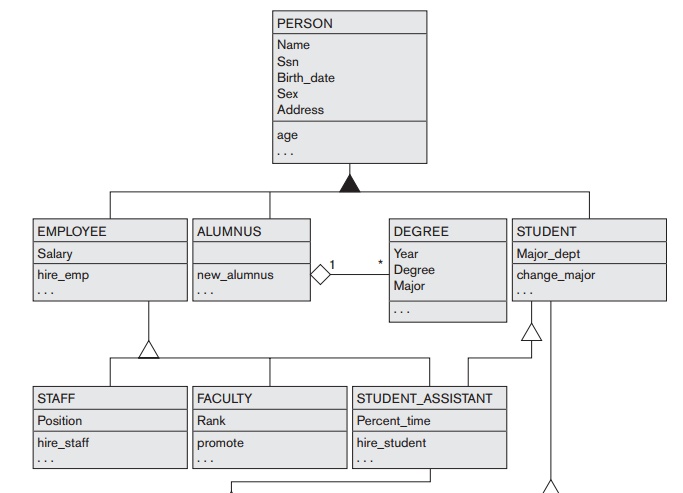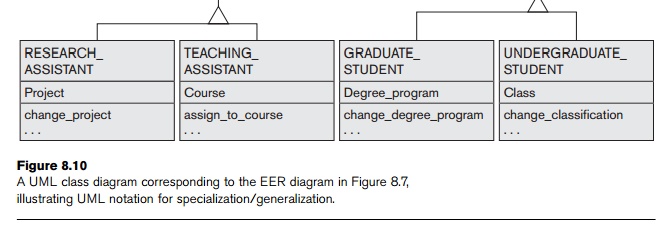Chapter: Fundamentals of Database Systems : Conceptual Modeling and Database Design : The Enhanced Entity-Relationship (EER) Model
Example of Other Notation: Representing Specialization and Generalization in UML Class Diagrams
Example of Other Notation: Representing Specialization and
Generalization in UML Class Diagrams
We now discuss the UML notation for generalization/specialization and
inheritance. We already presented basic UML class diagram notation and
terminology in Section 7.8. Figure 8.10 illustrates a possible UML class
diagram corresponding to the EER diagram in Figure 8.7. The basic notation for
specialization/generalization (see Figure 8.10) is to connect the subclasses by
vertical lines to a horizontal line, which has a triangle connecting the
horizontal line through another vertical line to the superclass. A blank
triangle indicates a specialization/generalization with the disjoint constraint, and a filled
triangle indicates an overlapping constraint.
The root superclass is called the base class, and the subclasses (leaf
nodes) are called leaf classes.
The above discussion and example in Figure 8.10, and the presentation in
Section 7.8 gave a brief overview of UML class diagrams and terminology. We
focused on the concepts that are relevant to ER and EER database modeling,
rather than those concepts that are more relevant to software engineering. In
UML, there are many details that we have not discussed because they are outside
the scope of this book and are mainly relevant to software engineering. For
example, classes can be of various types:
Abstract classes define
attributes and operations but do not have objects cor-responding to those
classes. These are mainly used to specify a set of attrib-utes and operations
that can be inherited.
Concrete classes can have objects
(entities) instantiated to belong to the class.
Template classes specify a template that can be further used to define
other classes.


In database design, we are mainly concerned with specifying concrete
classes whose collections of objects are permanently (or persistently) stored
in the database. The bibliographic notes at the end of this chapter give some
references to books that describe complete details of UML. Additional material
related to UML is covered in Chapter 10.
Related Topics